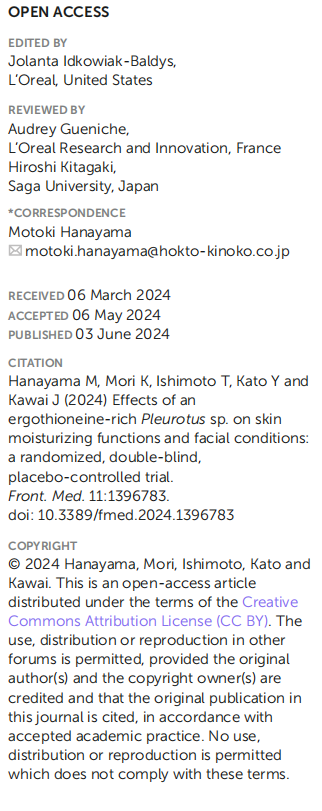文献精选
Chia Chi Kao, MD; and Dominik Duscher, MD, PhD
Aesthetic Surgery Journal 2024, Vol 44(7) 671–692 © The Author(s) 2023. Published by Oxford University Press on behalf of The Aesthetic Society.
This is an Open Access article distributed under the terms of the Creative Commons AttributionNonCommercial-NoDerivs licence (https:// creativecommons.org/licenses/by-nc-nd/4.0/), which permits non-commercial reproduction and distribution of the work, in any medium, provided the original work is not altered or transformed in any way, and that the work is properly cited. For commercial re-use, please contact 该Email地址已收到反垃圾邮件插件保护。要显示它您需要在浏览器中启用JavaScript。 for reprints and translation rights for reprints. All other permissions can be obtained through our RightsLink service via the Permissions link on the article page on our site—for further information please contact 该Email地址已收到反垃圾邮件插件保护。要显示它您需要在浏览器中启用JavaScript。.
https://doi.org/10.1093/asj/sjad382 www.aestheticsurgeryjournal.com
Abstract
Background: During aging, the face loses volume with progressive sagging of the soft tissues, while the neck demonstrates skin laxity and muscle banding. The treatment of facial and neck aging usually involves a traditional facelift, which can cause noticeable scarring and distortion of anatomy.
Objectives: Modern facelift surgery must avoid such shortcomings and still address aging in all layers of the face. To achieve this goal a novel surgical technique was developed and coined the “ponytail lift” (PTL). When global facial rejuvenation is indicated, this procedure is combined with neck skin excision and referred to as the “ponytail facelift” (PTFL).
Methods: A retrospective analysis of 600 consecutive cases over 22 years (2000-2022) of facial rejuvenation employing the endoscopic techniques of PTL and PTFL was performed. Patients were followed for at least 12 months postoperatively. Demographics, surgical data, and complications were recorded and analyzed. Additionally, technical details of the PTL and PTFL are discussed.
Results: There were no instances of postoperative skin flap necrosis, and no permanent nerve injuries were recorded. An additional surgical touch-up procedure to address unsatisfied aesthetic needs was performed in 20 cases.
Conclusions: The ponytail procedures offer a stepwise approach matched to the extent of the problem and are intended to refresh or transform the face with minimal incisions. The procedures represent a deep plane facelift without the scar burden, with incisions that are hidden in the temple, postauricular, and posterior scalp. The described techniques are safe and effective while providing reliable and satisfying results.
摘要
背景: 随着年龄的增长,面部体积会逐渐减小,软组织会逐渐下垂,而颈部会出现皮肤松弛和肌肉带状。面部和颈部衰老的治疗通常涉及传统的面部拉皮术,这会导致明显的疤痕和解剖结构扭曲。
目标: 现代面部拉皮手术必须避免此类缺点,同时还要解决面部所有层面的衰老问题。为了实现这一目标,开发了一种新颖的手术技术,创造了“马尾辫提升术”(PTL)这一名称。当需要进行整体面部年轻化时,该手术与颈部皮肤切除术相结合,称为“马尾辫拉皮术”(PTFL)。
Dr Kao is a plastic surgeon in private practice in Santa Monica, CA, USA. Dr Duscher is a plastic surgeon in private practice in Munich, Germany.
E-mail: 该Email地址已收到反垃圾邮件插件保护。要显示它您需要在浏览器中启用JavaScript。;">该Email地址已收到反垃圾邮件插件保护。要显示它您需要在浏览器中启用JavaScript。; Instagram: @kaoplasticsurgery
Corresponding Author:
Dr Chia Chi Kao, 900 Wilshire Blvd, Suite 100, Santa Monica, CA 90401, USA.
方法: 回顾性分析了 22 年间(2000-2022 年)采用 PTL 和 PTFL 内窥镜技术进行面部年轻化的 600 个连续病例。术后对患者进行至少 12 个月的随访。记录并分析了人口统计学、手术数据和并发症。此外,还讨论了 PTL 和 PTFL 的技术细节。
结果: 没有出现术后皮瓣坏死的情况,也没有记录到永久性神经损伤。在 20 个病例中进行了额外的外科修补手术,以解决未满足的美学需求。
结论: 马尾辫手术提供了一种与问题程度相匹配的分步方法,旨在以最小的切口使面部得以改造或焕然一新。这些手术代表了一种深层平面拉皮术,没有疤痕负担,切口隐藏在太阳穴、耳后和头皮后部。所描述的技术是安全有效的,同时提供可靠且令人满意的结果。
证据等级:: 3 级(治疗性)
Tanzila Khiljee 1 , Naveed Akhtar 1 , Sonia Khiljee 2,*, Bushra Khiljee 2 , Hafiz Majid Rasheed 3 , Siddique Akber Ansari 4 , Hamad M. Alkahtani 4 and Irfan Aamer Ansari 5
1 Faculty of Pharmacy and Alternative Medicines, The Islamia University of Bahawalpur, Punjab 63100, Pakistan; 该Email地址已收到反垃圾邮件插件保护。要显示它您需要在浏览器中启用JavaScript。 (T.K.); 该Email地址已收到反垃圾邮件插件保护。要显示它您需要在浏览器中启用JavaScript。 (N.A.)
2 Shahida Islam College of Pharmacy, Shahida Islam Medical Complex, Lodhran 59320, Pakistan; 该Email地址已收到反垃圾邮件插件保护。要显示它您需要在浏览器中启用JavaScript。
3 Faculty of Pharmacy, The University of Lahore, Lahore 54590, Pakistan; 该Email地址已收到反垃圾邮件插件保护。要显示它您需要在浏览器中启用JavaScript。
4 Department of Pharmaceutical Chemistry, College of Pharmacy, King Saud University, Riyadh 11451, Saudi Arabia; 该Email地址已收到反垃圾邮件插件保护。要显示它您需要在浏览器中启用JavaScript。 (S.A.A.); 该Email地址已收到反垃圾邮件插件保护。要显示它您需要在浏览器中启用JavaScript。 (H.M.A.)
5 Department of Drug Science and Technology, University of Turin, 10124 Turin, Italy; 该Email地址已收到反垃圾邮件插件保护。要显示它您需要在浏览器中启用JavaScript。 * Correspondence: 该Email地址已收到反垃圾邮件插件保护。要显示它您需要在浏览器中启用JavaScript。
Abstract: Background: The aim of this study was to evaluate the moisturizing efficacy of quince fruit, used in folk medicine. For this purpose, the phytoconstituents of Cydonia oblonga fruit extract, like phenolics and flavonoids, were determined. A stable cosmetic emulgel containing 4% Cydonia oblonga fresh fruit extract was formulated and subjected to in vivo evaluation compared with a control. Materials and Methods: Cydonia oblonga fresh fruit extract was evaluated for tyrosinase activity and phenolic and flavonoid content. A stable emulgel containing 4% Cydonia oblonga fresh fruit extract was formulated and tested in a skin irritation test. After this, in vivo tests of erythema, moisture, sebum, and skin elasticity were conducted. The in vivo evaluation was a randomized and single-blind study. Thirteen healthy female volunteers were selected for a three-month study period. Results: Cydonia oblonga fruit extract showed good phenolic and flavonoid content, which was associated with its good antioxidant and tyrosinase-inhibiting activity. Cydonia oblonga containing the emulgel showed a reduction in sebum and erythema, while the elasticity and moisture content showed increments in their levels after the three-month application of the formulation. The fruit contains chlorogenic acid and many sugars, which might account for its anti-inflammatory and sebum reduction effects; it is also capable of enhancing the skin’s hydration level and decreasing skin sagging by enhancing its elasticity. Conclusion: The emulgel loaded with Cydonia oblonga fresh fruit extract is verified regarding its folklore status as a moisturizing agent that enhances the facial skin cells’ resilience potential.
Keywords: quince; in vivo assessment; moisturizer; chlorogenic acid; facial skin resilience
Citation: Khiljee, T.; Akhtar, N.; Khiljee, S.; Khiljee, B.; Rasheed, H.M.; Ansari, S.A.; Alkahtani, H.M.; Ansari, I.A. Gauging Quince Phytonutrients and Its 4% Emulgel Effect on Amplifying Facial Skin Moisturizing Potential. Gels 2023, 9, 934. https:// doi.org/10.3390/gels9120934 Academic Editors: Carla Villa and Eleonora Russo
Received: 9 October 2023
Revised: 6 November 2023
Accepted: 15 November 2023
Published: 28 November 2023
Copyright: © 2023 by the authors. Licensee MDPI, Basel, Switzerland. This article is an open access article distributed under the terms and conditions of the Creative Commons Attribution (CC BY) license (https:// creativecommons.org/licenses/by/ 4.0/).
Jae-Seung Yun1 , Kyuho Kim1 , Yu-Bae Ahn1 , Kyungdo Han2 , Seung-Hyun Ko1
1 Department of Internal Medicine, St. Vincent’s Hospital, College of Medicine, The Catholic University of Korea, Seoul,
2 Department of Statistics and Actuarial Science, Soongsil University, Seoul, Korea
Due to increased life expectancy and lifestyle changes, the prevalence of diabetes among the elderly in Korea is continuously rising, as is the associated public health burden. Diabetes management in elderly patients is complicated by age-related physiological changes, sarcopenia characterized by loss of muscle mass and function, comorbidities, and varying levels of functional, cognitive, and mobility abilities that lead to frailty. Moreover, elderly patients with diabetes frequently face multiple chronic conditions that elevate their risk of cardiovascular diseases, cancer, and mortality; they are also prone to complications such as hyperglycemic hyperosmolar state, diabetic ketoacidosis, and severe hypoglycemia. This review examines the characteristics of and management approaches for diabetes in the elderly, and advocates for a comprehensive yet personalized strategy.
Keywords: Aged; Diabetes mellitus, type 2; Frailty; Multimorbidity; Precision medicine; Sarcopenia






